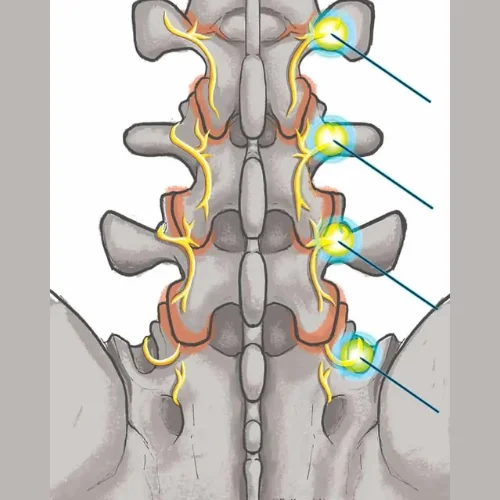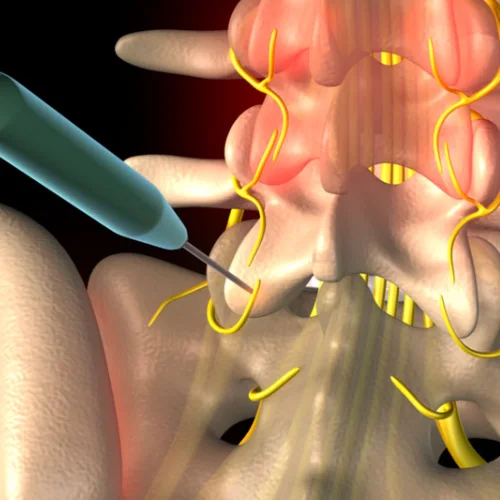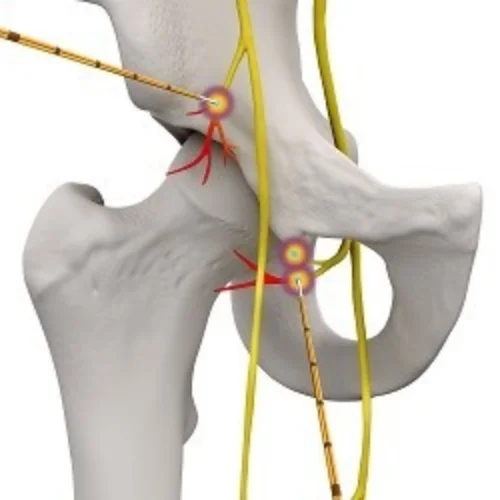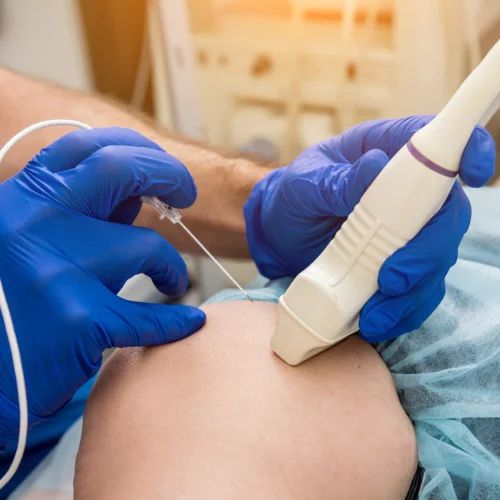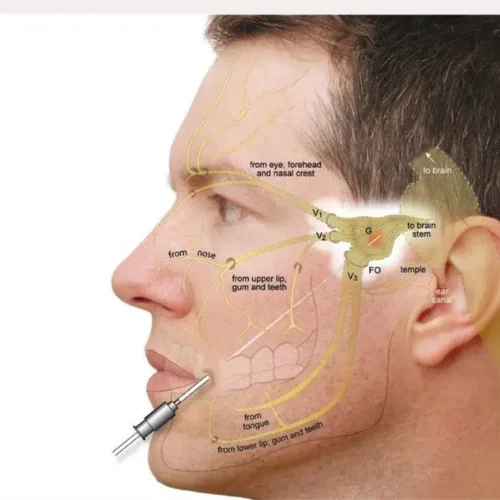Working Time
Book Appointment
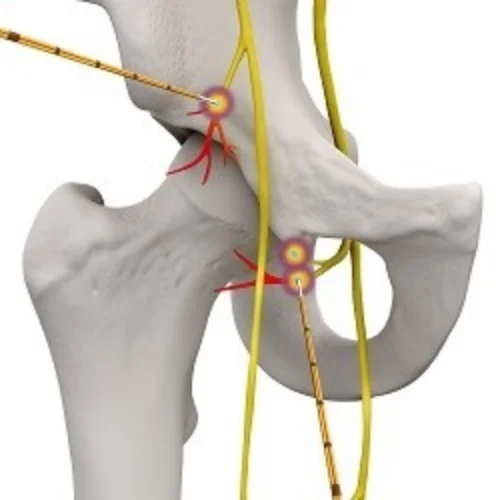
Cooled Radiofrequency Ablation (C-RFA) is a medical procedure used to manage chronic pain conditions, particularly those involving nerves. It is a minimally invasive technique that utilises radiofrequency energy to target and disrupt the function of specific nerves, thereby reducing pain signals. The "cooled" aspect of this procedure involves the use of a specialised system to cool the electrode tip, preventing excessive heat and allowing for a larger treatment area.
Here's an overview of Cooled Radiofrequency Ablation:
Procedure Overview:
Patient Evaluation:
Before undergoing Cooled Radiofrequency Ablation, patients typically undergo a thorough evaluation by their healthcare provider. This may include a review of medical history, imaging studies, and diagnostic procedures to identify the source of chronic pain.
Local Anaesthesia:
The procedure is often performed with the patient awake. Local anaesthesia is applied to numb the skin and tissues around the targeted area, ensuring comfort during the intervention.
Guided Imaging:
Fluoroscopy or ultrasound is often used to guide the placement of the radiofrequency electrode precisely. This imaging allows the healthcare provider to visualise the targeted nerves and ensure accurate placement of the electrode.
Cooled Radiofrequency Ablation:
The cooled radiofrequency electrode is inserted through the skin and positioned near the targeted nerves. Once in place, radiofrequency energy is applied. The cooling mechanism helps prevent excessive tissue damage and allows for a larger treatment area compared to traditional radiofrequency ablation.
Lesioning of Nerves:
The radiofrequency energy creates a controlled lesion on the nerves responsible for transmitting pain signals. This disrupts their ability to transmit pain, providing relief for patients suffering from chronic pain conditions.
Recovery:
Following the procedure, patients are monitored for a brief period in a recovery area. They may be advised to take it easy for a short time to allow for initial healing.
Conditions Treated with Cooled Radiofrequency Ablation:
Chronic Back Pain:
C-RFA may be used to target nerves in the lumbar or thoracic spine for individuals experiencing chronic back pain.
Facet Joint Pain:
Facet joints, which help with spine movement, can be a source of chronic pain. C-RFA can be applied to these joints to provide relief.
Sacroiliac Joint Dysfunction:
Dysfunction in the sacral iliac joint, often causing lower back and buttock pain, can be addressed through C-RFA.
Neuropathic Pain:
Conditions like peripheral neuropathy or neuralgias may benefit from Cooled Radiofrequency Ablation.
Knee Joint, Shoulder joint and Hip joint
Cooled radiofrequency (RF) ablation is a minimally invasive procedure used to alleviate pain and improve function in patients with knee, hip, and shoulder arthritis. During the procedure, a specialised RF probe with cooling technology is inserted into the affected joint under imaging guidance.
The probe generates heat to target and disrupt the pain-conducting nerve fibres responsible for transmitting pain signals from the arthritic joint. Unlike traditional RF ablation, cooled RF ablation allows for larger treatment areas and more controlled heating, minimising the risk of tissue damage and providing longer-lasting pain relief. This procedure offers a non-surgical option for managing arthritis-related pain in the knee, hip, and shoulder joints, improving patients' quality of life and mobility.
Benefits:
Minimally Invasive: C-RFA is a less invasive alternative to traditional surgical procedures, reducing the risk of complications and promoting quicker recovery.
Long-lasting Relief: The effects of C-RFA can provide relief for an extended period, allowing individuals to experience a significant reduction in chronic pain symptoms.
Preservation of Surrounding Tissues: The cooling technology helps protect surrounding tissues from excessive heat, minimising the risk of damage to adjacent structures.
It's important for individuals considering Cooled Radiofrequency Ablation to consult with their healthcare provider to determine if this procedure is suitable for their specific condition and to discuss potential risks and benefits.

